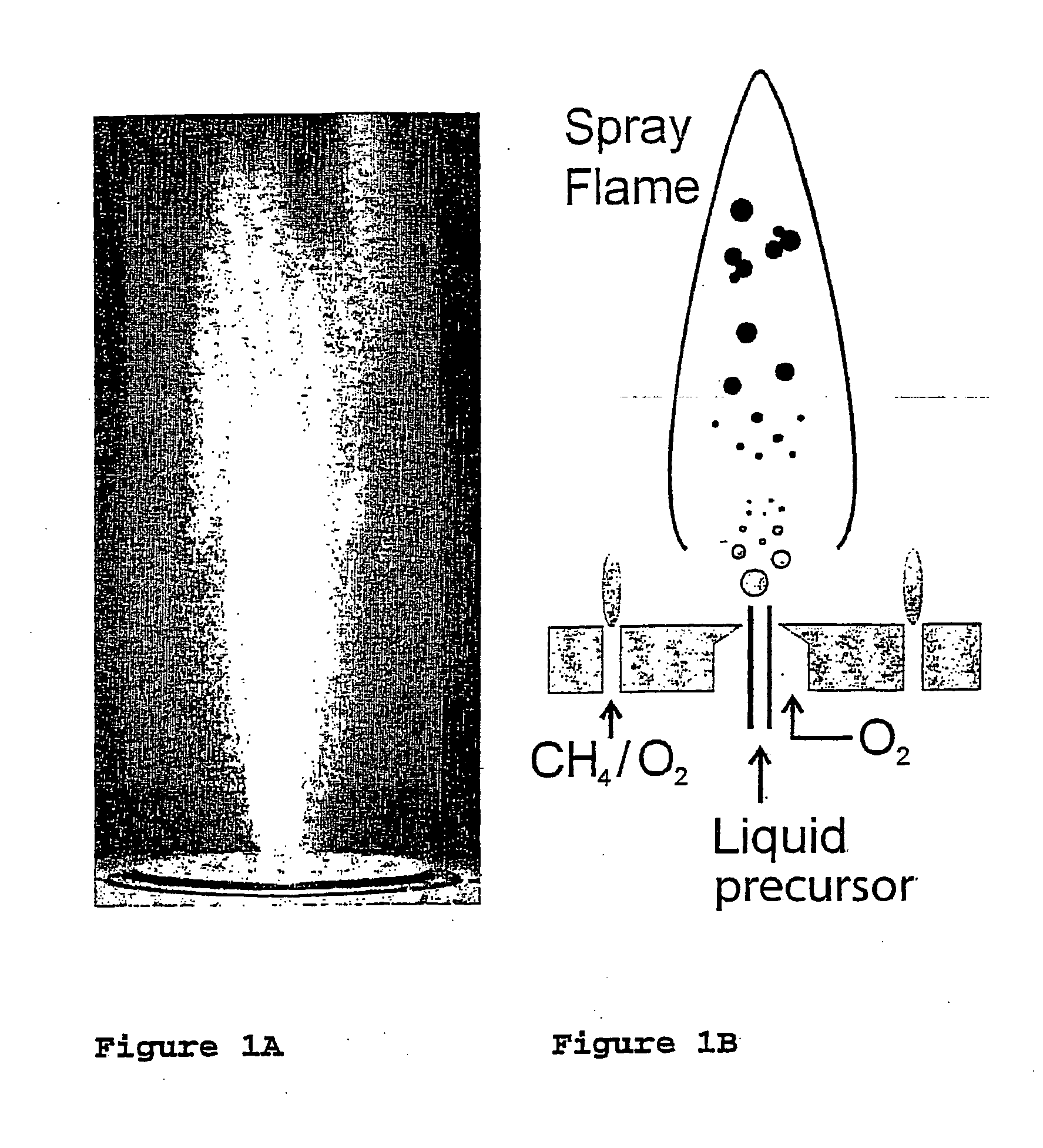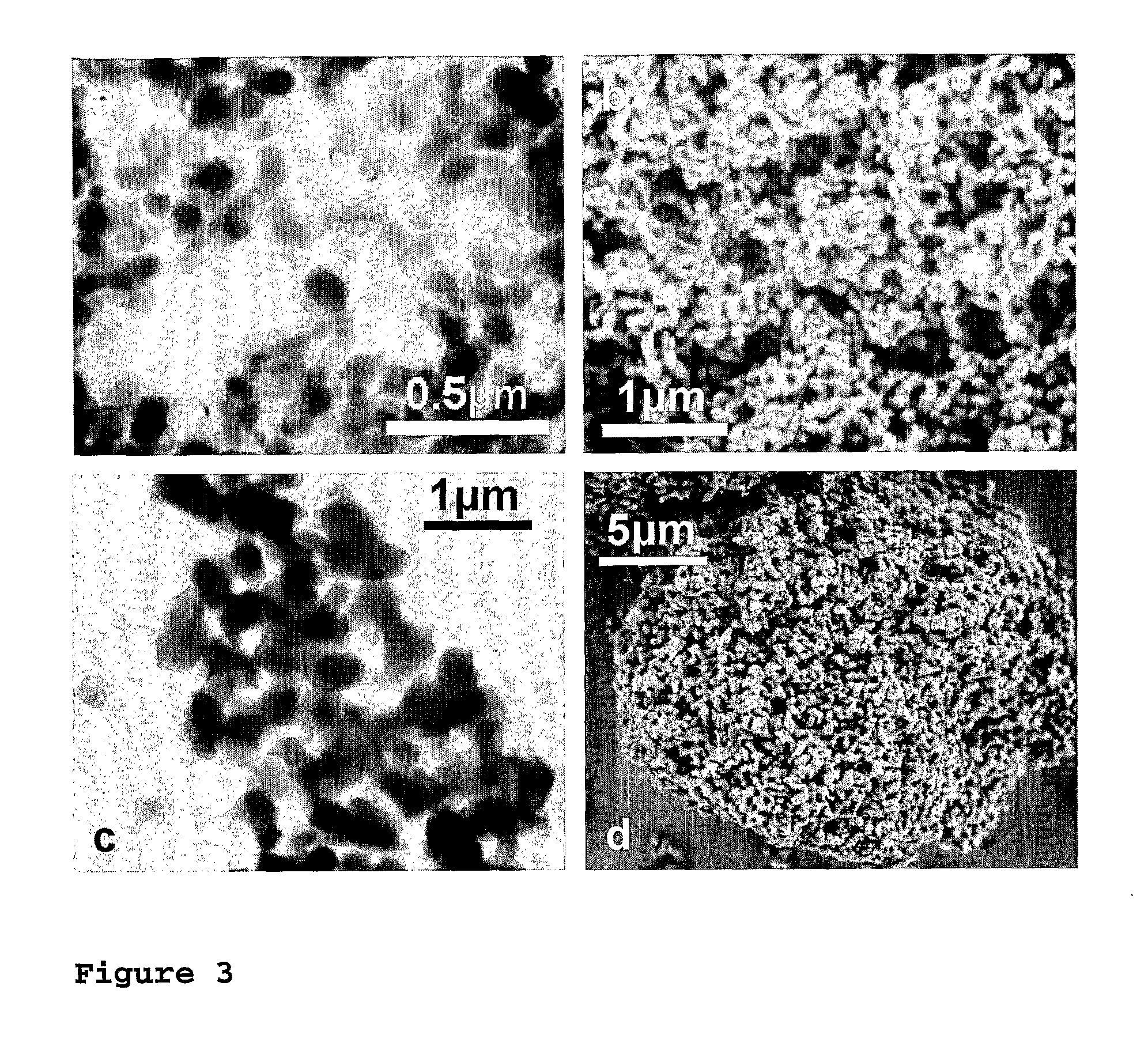Flame synthesis of metal salt nanoparticles, in particular calcium and phosphate comprising nanoparticles
a technology flame, which is applied in the field of flame synthesis of metal salt nanoparticles, fine metal salt particles, can solve the problems of traditional methods, sup>1, 3-5, and generally requires time and cost intensive post-preparation, etc., and achieves high production rate and high production rate
- Summary
- Abstract
- Description
- Claims
- Application Information
AI Technical Summary
Benefits of technology
Problems solved by technology
Method used
Image
Examples
examples
[0078] Powder Preparation
[0079] Calcium phosphate biomaterials were prepared by flame spray pyrolysis using calcium oxide (99.9%, Aldrich) dissolved in 2-ethylhexanoic acid (purum., ≧98%, Fluka) and tributyl phosphate (puriss., ≧99%, Fluka) as precursors. The calcium content of the Ca precursor was determined by complexometry with ethylenediaminetetraacetic acid disodium salt dihydrate (ref.) (≧99%, Fluka) to be 0.768 mol kg−1. Starting from a parent solution (38 ml per run) with a calcium to phosphorous molar ratio (Ca / P) of 1.5, the various mixtures ranging from 1.425≦Ca / P≦1.667 have been obtained by adding corresponding amounts of either calcium 2-ethylhexanoate or tributyl phosphate. For the half (Ca10(PO4)6OH F) and fully (Ca10(PO4)6F2) fluorine substituted hydroxyapatites, trifluoroacetic acid (>99%, Riedel deHaen) has been correspondingly mixed with precursors having a molar ratio of Ca / P=1.67. Throughout all the experiments the concentration of the precursor solutions was k...
PUM
| Property | Measurement | Unit |
|---|---|---|
| enthalpy | aaaaa | aaaaa |
| temperature | aaaaa | aaaaa |
| specific surface area | aaaaa | aaaaa |
Abstract
Description
Claims
Application Information
 Login to View More
Login to View More - R&D
- Intellectual Property
- Life Sciences
- Materials
- Tech Scout
- Unparalleled Data Quality
- Higher Quality Content
- 60% Fewer Hallucinations
Browse by: Latest US Patents, China's latest patents, Technical Efficacy Thesaurus, Application Domain, Technology Topic, Popular Technical Reports.
© 2025 PatSnap. All rights reserved.Legal|Privacy policy|Modern Slavery Act Transparency Statement|Sitemap|About US| Contact US: help@patsnap.com



